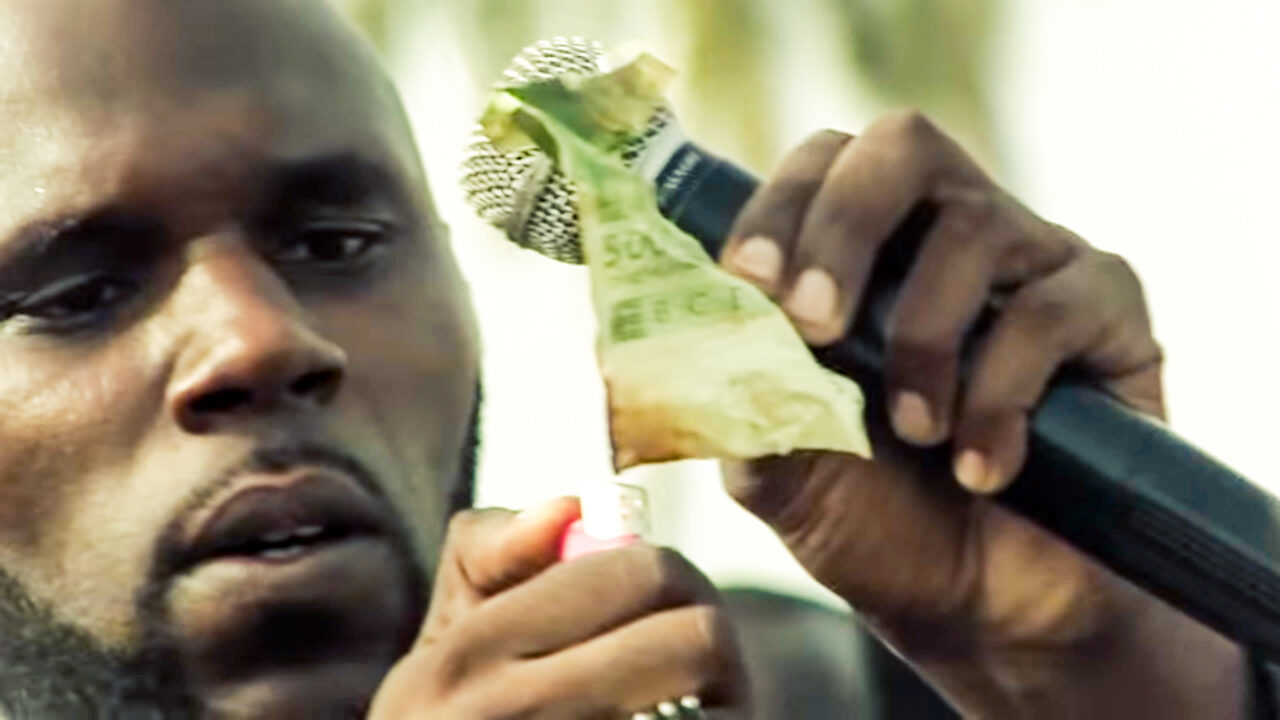Protest Against A Currency
Several countries in West and Central Africa have had a common currency for decades: the CFA franc. It is a remnant from the French colonial era. Ten musicians have recently written a song against this currency. And they are not the only ones to criticise it.
“No more blah-blah – no more CFA franc! History is on the move and nobody will stop it” – this is how the chorus of 7 minutes contre le CFA begins, a song by ten musicians from seven countries, which was released at the end of June 2018.
‘Why, of all things, would one rap and sing against a currency?’, some might think. “The CFA franc is a neo-colonial tool that is controlled from France,” says Togolese rapper Elom 20ce, one of the artists contributing to the song. “The currency does not serve our economy, nor does it represent it,” he criticises.
It is not only the ten musicians who repeatedly accuse France of exploiting the countries of the CFA franc zone, of keeping economic development low in a controlled manner and of exploiting the political and military influence in the region. Critics like Elom 20ce and his musical comrades-in-arms regard the ongoing existence of the CFA franc as proof that true decolonisation has not taken place.
The colonial legacy of the CFA franc
The CFA franc was introduced by the former colonial power France in 1945. The abbreviation CFA originally stood for Colonies Françaises d’Afrique – i.e. “French Colonies in Africa”. To blur the colonial past, since the independence of the CFA countries the abbreviation has stood for Communauté Financière Africaine (African Financial Community) or Franc de la Coopération Financière en Afrique Centrale (Franc of Financial Cooperation in Central Africa).
The single currency is divided into two economic areas and, technically speaking, two currencies: The CFA franc BCEAO in the eight countries of the UEMOA economic area and the CFA franc BEAC in the six countries of the Central African Economic Area CEMAC.

Source: Banque de France
Today’s “franc zone” includes the former colonial power France, the two CFA zones and the Comoros in the Indian Ocean. The Comorian franc is a currency in its own right, but pegged to the euro just like the CFA franc.
Since its introduction, the CFA franc has always been pegged to the French franc. This did not change when the CFA countries became independent from France. France’s influence in the two economic areas remained and when France introduced the Euro, the CFA franc was pegged to the euro. Since then, one euro has cost 655,957 CFA francs.
This peg means that the CFA franc can only be revalued or devalued to a limited extent – even if France agrees to do so. The CFA franc grows and shrinks with the euro, so to speak. This makes the currency stable and relatively strong compared with the currencies of neighbouring countries. But it also makes exports more expensive – an economic disadvantage for the CFA countries, which mainly export raw materials. In the absence of an established manufacturing industry, most finished products and consumer goods are imported mainly from abroad.
France’s influence is also evident when one looks at the governing bodies of the two central banks of the CFA zone: France has a veto right in the West African central bank BCEAO, and in the Central African BEAC bodies decisions must be taken unanimously – so they can be blocked by France. In addition, CFA countries must deposit half of their foreign reserves with the French central bank. This guarantees that the CFA franc can be exchanged into other currencies.
Criticism of the CFA franc
“The problems of the CFA franc have long been discussed among experts and intellectuals,” says Senegalese economist Ndongo Samba Sylla. He has been observing the social discourse about the CFA franc for several years.

Ndongo Samba Sylla is an economist in Dakar/Senegal and works for Rosa Luxemburg Foundation as research and programme manager.
Sylla is co-author of the book L’arme invisible de la Françafrique – Une histoire du Franc CFA, published in September 2018.
“Since 2016, the debate has been reaching a wider audience because pan-African movements are addressing the issue,” explains Sylla. In Senegal, for example, the France Dégage (Out with France) group is campaigning for the “monetary sovereignty” of CFA states. More people are thus becoming aware of the degree of dependence between their currency and their country. Nevertheless, there are still enough supporters, most of whom emphasise the stability of the currency.
Sylla is annoyed that the debate about the CFA franc is too often broken down into the pros and cons: “Because these are extremely unequally distributed between social classes,” the economist points out. For example: “It is mainly the political and economic elite who benefit from the much-cited stability of the currency: the managers of the central banks and French companies,” says Sylla.
And while pressure from below is growing, the majority of the political elite – especially in the Central African CFA countries – refuses to discuss it. Politicians are accused of wanting to leave everything as it is in order to cement their power and personal prosperity. On the other hand, France retains its influence and economic advantages. However, during a visit to Burkina Faso in 2017, French President Emmanuel Macron stressed that the states could leave the franc zone at any time.
Controversial protest leader
One of the most dazzling figures in the current struggle against the CFA franc is the pan-African activist Kémi Séba. He has initiated the recent protests against the currency and leads the pan-African movement Urgences Panafricanistes.
Last year in Dakar, Kémi Séba burned a 5,000 franc note (the equivalent of about 8 euros) in a media-effective protest. He was then arrested, released a short time later and deported to France – Séba was born in Strasbourg, his parents are from Benin.

(Screenshot Youtube)
Séba is not without controversy: The self-proclaimed “Afrocentrist” founded a radical black movement called Tribu Ka in France. The group, which has since been banned, openly expressed its anti-Semitic views. Critics attested the movement “black suprematism”. Outside France and Africa, Kémi Séba received support from former Iranian President Mahmoud Ahmadinejad and Russian nationalist ideologist Alexander Dugin, among others.
In the meantime, the polarising activist is touring numerous countries inside and outside Africa to spread the ideas of his pan-African movement – including the idea of abolishing the CFA franc. The protests he initiated against the currency gave a new dynamic to the debate about it. In a user vote by africanews, the activist was voted African Personality of the Year 2017 by a large margin.
Alternatives to the CFA Franc
The protest song 7 minutes contre le CFA, however, does not offer any elaborate solutions in its seven minutes. Although one of the last lines reads “Our money should be gold, said Mr Ghaddafi”, this may be understood as a metaphor for Africa’s wealth of raw materials.
It is very difficult to say where the CFA franc is heading, says economist Ndongo Samba Sylla. There are plans to introduce a new common currency – without french influence – in the West African economic zone ECOWAS from 2020. But economist Sylla does not believe that this plan will actually be implemented. For him, two scenarios are most likely.
The nationalist path
Sylla describes the first scenario as the nationalist path: “This means leaving the country and introducing a national currency. This approach was adopted, for example, by Algeria and Vietnam, which were also part of the franc zone in the colonial past. Guinea, Madagascar and Mauritania also returned to their own national currencies some time after independence.
But this option has its dangers, Sylla stresses: “France has always tried to sabotage their respective economies. After Guinea decided to introduce its own national currency, France tried to put counterfeit notes into circulation, says Sylla. This is not the only reason why this option is dangerous.
The pan-African perspective
Ndongo Samba Sylla cites the pan-African solution as the second scenario. “The first step would be for France to withdraw from the CFA franc zone.” This means: no more depositing reserves in France, no more French representation in central bank bodies. “African countries would then be responsible for their own single currency and this currency could be renamed,” says the economist. He also calls for a restructuring of the central banks so that they would have “more influence on development and growth” in the region.
Sylla advocates a pan-African solution in the form of a “community of solidarity based on national currencies”: “Having a national currency and managing it well creates a certain flexibility within the domestic economy. If you have a single currency in 14 different countries, there can be major limitations,” the economist explains.
Sylla suggests that in this case, foreign currency reserves of the participating countries should be managed by a monetary fund or a central bank. A common unit of account could be used to convert the different national currencies. “This would also improve trade relations between these countries,” says Sylla.
While these scenarios still sound like dreams of the future, the performers of 7 minutes contre le CFA want to draw more attention to the problems associated with the CFA franc with their music.
A good month after the release of the song, Elom 20ce is satisfied with the response so far: “There have been many TV and radio reports and discussions about it. French and international media have also reported,” says the rapper. For him it is clear, “that the situation does not change from one day to the next. But as far as awareness-raising is concerned, the balance is positive and we must not stop there”.
No more murmurs, only shouts in the streets!
This is another line of the chorus. The message is clear: away from intellectual circles, towards the broad masses. The ten artists of 7 minutes contre le CFA also call for interaction: With the hashtag #FreestyleContreLeCFA, verses and rhymes from sympathisers of the protest are to be collected.
Published on 6 August 2018 on fm4.ORF.at
and as radio report in FM4 Connected



